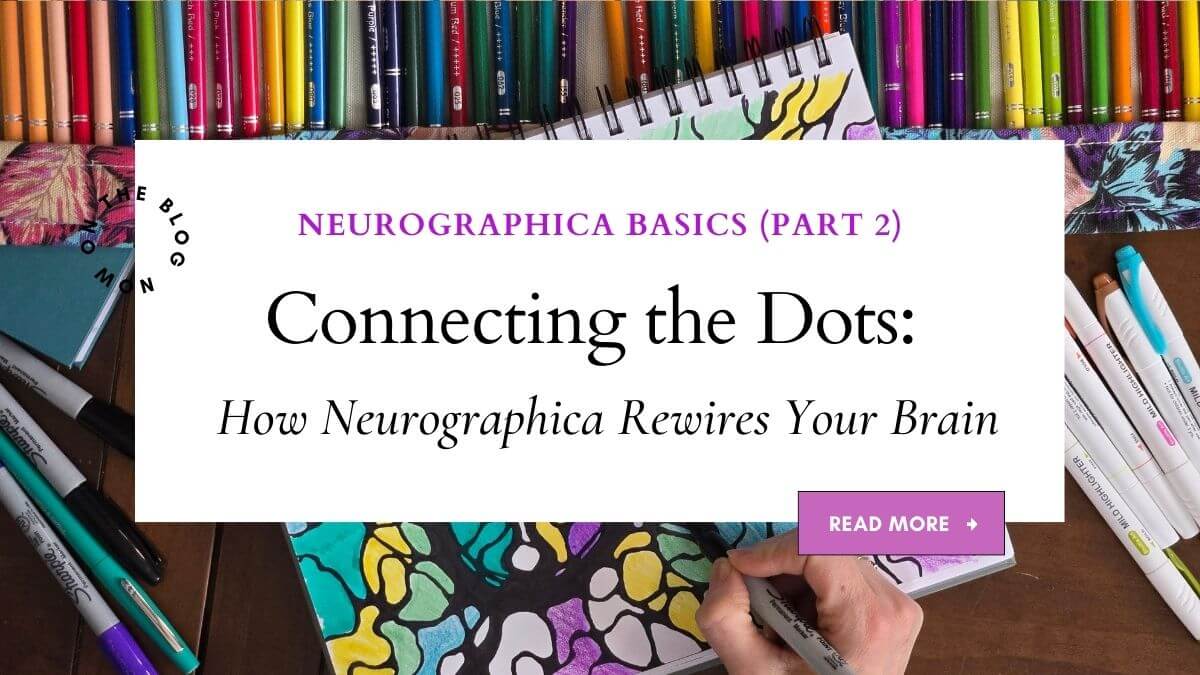Connecting the Dots: How Neurographica Rewires Your Brain

Neurographica is about so much more than just creating a pretty picture - it's about the process AND the product.
So in the last post, I introduced this amazing modality of Neurographica.
Today, let's chat about what's actually happening in your brain when you draw with Neurographica.
Have you ever noticed how when you're in the shower or driving, you suddenly have these "aha" moments?
These moments of clarity that seem to come out of nowhere?
 (1)67c6258e1bba4_lg.jpg)
There's a reason for that.
It’s because your conscious mind is occupied, which gives your subconscious a chance to process stuff and the thoughts bubble up to the surface. Boom. Idea!
Neurographica works in a similar way.
Think about it like this.
You start drawing - usually with some kind of intention or “theme”. That theme is something that’s on your mind or that you want a shift around. As you follow the Neurographica steps (don’t worry - I’ll lead you through these), your conscious mind gets busy with the drawing. Meanwhile, your subconscious mind is like, "Yay! She’s finally distracted so I can sort through all this stuff!"
And the result?
New perspectives, solutions, and a sense of calm that wasn't there before.
What makes this different from just regular doodling or NeuroArt is the specific algorithm (like I mentioned in the last post). It’s those steps that you’ll move through as you draw.
Something else you may have noticed about these kinds of drawings -we draw lots of lines.
And sometimes they cross and create sharp angles. When we draw, we smooth the edges, training your brain to find smoother paths through problems. Every time you draw, you’re teaching your mind to look for the flow instead of getting stuck on the obstacles.
 (1)67c62620b328d_lg.jpg)
And even though we use our entire brains for pretty much everything, there is a distinctive duality with Neurographica, because your “logical” left brain is following the steps and structure, while your “creative” right brain is playing with colors and shapes. Both sides are happy, which I think is where the flow state comes into play (but that’s just me guessing, based on my own personal experience).
That flow state is like magic, though!
Clients who’ve drawn with me are always surprised at how quickly we get to the end of the class, even though it’s a couple of hours long. And the experience is about so much more than just creating a beautiful piece of artwork.
- You may notice just how much perfectionism and self-judgment are present when you’re drawing (that's me 🙋, but I've come a LONG way over the years).
- You may be able to completely drop into the practice from the beginning (like my sister).
- You may find yourself seeing things in your drawings and attach meaning to those things, if they’re significant.
It really is a different experience for everyone.
Usually, even when people finish and AREN’T particularly in love with their drawing, from a visual standpoint, they’re okay with it because of the shifts that occurred in their brain WHILE they were drawing.
You won't look at every drawing like it's a masterpiece.
But understand that the drawing is a means to an end. It’s nice when we like what we created, but it’s not necessary to have the shift we want to have.
The thing is - Neurographica is like anything else. The more you do it, the more skilled you become and the more you’ll like the drawings that you create (along with the shifts and transformations of your perspective).
 (1)67c626a7bb7de_lg.jpg)
That's one of my favorite parts of Neurographica (I know, I have a few favorites) but it’s the fact that you put in all this effort as you’re drawing, and you get this double benefit of processing your thoughts AND creating something visually beautiful, that’s totally unique to you.
I often see it as this visual diary entry, that only you can really understand.

You’d never judge what you put into your diary - it's your thoughts. Unfiltered.
And Neurographica is similar in that it’s a visual depiction of your thoughts on the page.
67c62b843af03_lg.jpg)
Okay, that's enough for now.
Next time, I'll share exactly how Neurographica can help with specific challenges - stress, decision-making, building healthy habits, setting goals - pretty much anything you can think of.
And if you're thinking - sounds good, but I don't know if I have the time to do this... I've got you.
Click here to download your checklist to help you Find 3 Hours This Week (to make space for your new favorite creative hobby....that's Neurographica, obvs 😉).
At the very least, it'll give you a place to start hunting for chunks of time in your week, to make room for the art and self-development that you want.

Categories: : Neurographica Basics
 Krystal Mills
Krystal Mills 